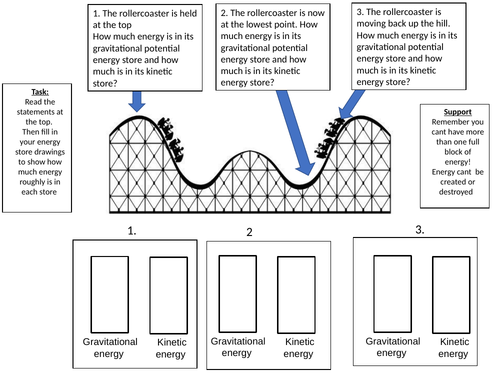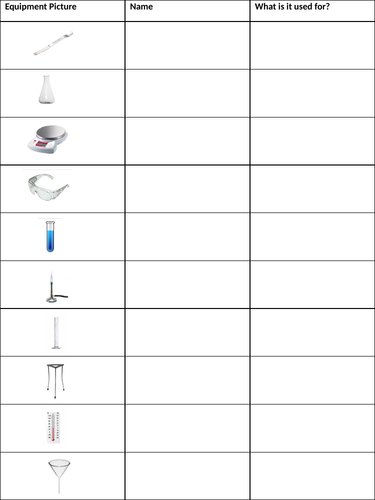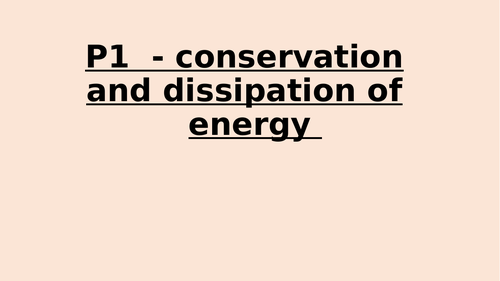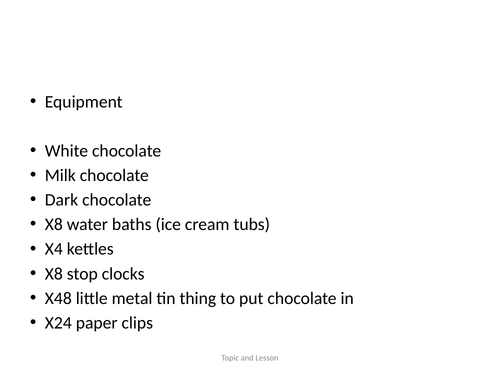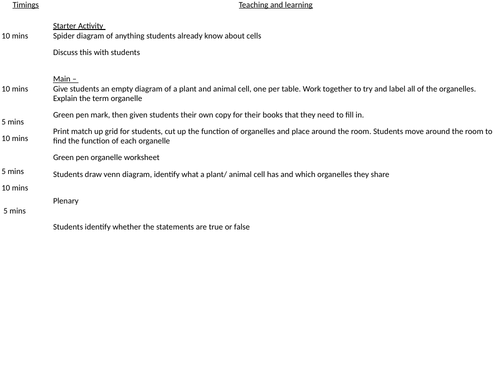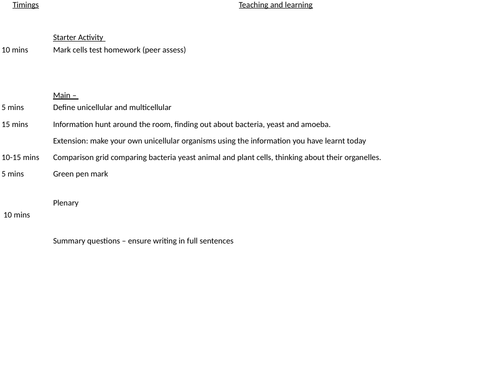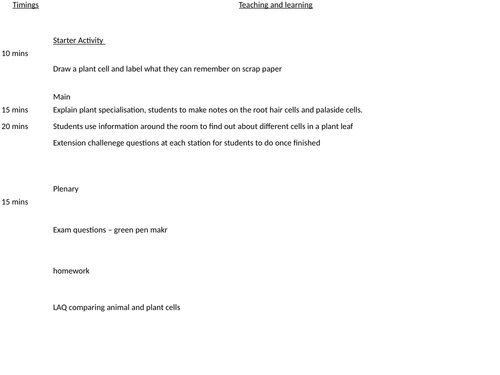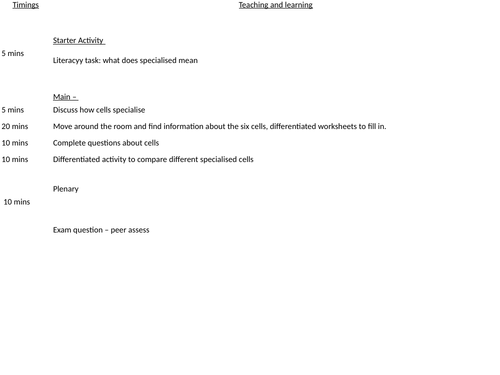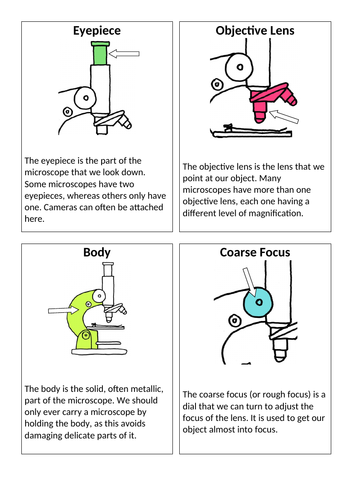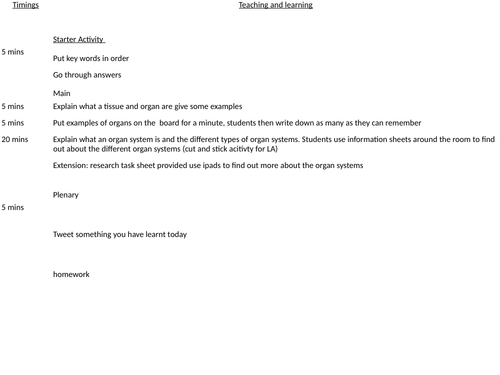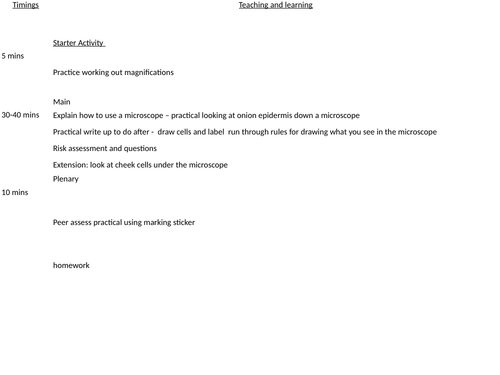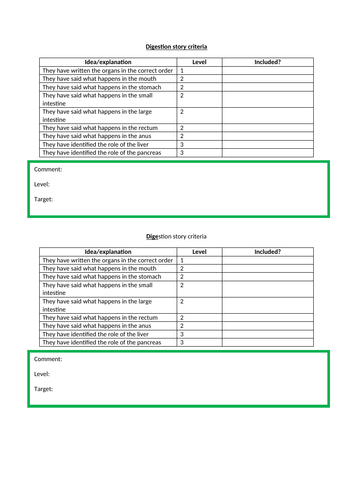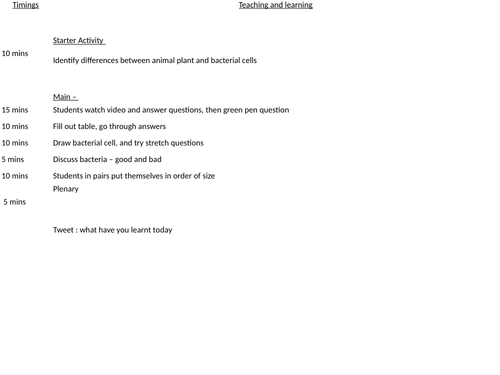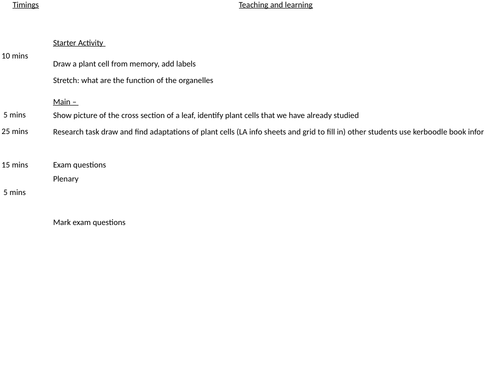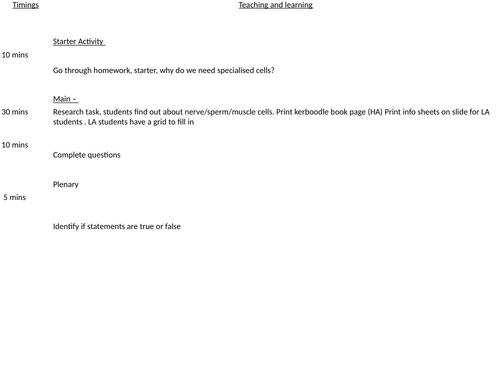
124Uploads
33k+Views
8k+Downloads
All resources

Energy transfer diagrams
Using energy transfer diagrams to help with the understanding that energy is conserved.

Lab equipment worksheet
A worksheet with common lab equipment for students to fill in as they are introduced to the lab.

Compounds
Suitable for KS3
Includes:
Introduction to compounds
Particle diagrams of elements and compounds
Naming compounds with two and three elements
Mini practical to compare elements and compounds
All answers included

Physics paper 1 revision
Complete paper one Physics revision following the AQA trilogy specification.
Parts for higher only are highlighted.
work booklets to accompany powerpoint, which can be used in lessons or revision sessions.
Questions embedded in the powerpoint with answers for students to practice and focus on key concepts
My year 11s have found these benefical.

P3 - Energy resources summary
Summary of the P3 topic
Including a revision booklet for students to work through

P13.2 Magnetic fields of electric currents
P13.2 Following the AQA kerboodle scheme of work
Aimed at a low ability class with targets of level 4
Starter: differentiated bronze/silver/gold starter questions, with answers to green pen
Main: diagram of right hand rule to explain and label. Then a think pair share about different scenarios that could happen.
Sentence starters to help put their think pair share ideas together
Work on a solenoid - reduce task to reduce the information into one sentence
Plenary - differentiated pick the task

Melting points KS3
Aimed at mixed ability year 8 class
Starter: which chocolate do you think is the most pure?
Main: explain what is meant by pure
carry out a practical to melt different chocolates to work out which is most pure and how we know that
plenary: questions to evaluate the practical

Solubility at different temperatures KS3
Aimed at mixed ability year 8 class
Starter: Write a hypothesis for what students think will happen to the amount of a solute that can dissolve as temperature increases
Main: Practical, have different water baths, see how much sodium bicarbonate dissolves at each temperature
Record results on worksheet
Differentiated worksheet higher or lower ability. Once completed practical evaluation and conclusion on each practical. Different tasks for higher and lower ability students
Bundle

Separation techniques KS3
Bundle of lessons for year 8
L1 - elements compounds mixtures
L2 - Dissolving
L3 - Solubility
L4 & 5 - filtering and evaporating
L6 - Melting points
L7 - Simple distillation
L8 - Fractional distillation
L9 - Chromatography

Plant and animal cells KS3
Aimed at a mixed ability year 7 class
10 mins
Spider diagram of anything students already know about cells
Discuss this with students
Give students an empty diagram of a plant and animal cell, one per table. Work together to try and label all of the organelles. Explain the term organelle
Green pen mark, then given students their own copy for their books that they need to fill in.
Print match up grid for students, cut up the function of organelles and place around the room. Students move around the room to find the function of each organelle
Green pen organelle worksheet
Students draw venn diagram, identify what a plant/ animal cell has and which organelles they share
Plenary
5 mins
Students identify whether the statements are true or false

Unicellular organisms KS3
Aimed at mixed ability year 7 class
Starter: how many cells make up the human body
Main: key definitions uni/multi cellular
task to move around the room and find out about different unicellular organisms
Comparison task to compare organelles in unicelllular organisms
Plenary: summary questions based on the lesson

Plant cells, tissues and organs KS3
Aimed at mixed ability year 7 class - some resources from other areas of TES
Starter: memory task, draw and label a plant cell with all they can remember
Main: draw and label root hair cell and palasaide cell, write the function and adaptations
use information around the room to fill in diagram of cells in a leaf and how they help photosynthesis
extension questions at each station
Plenary: exam questions

Animal cell specialisation KS3
Aimed at a mixed ability year 7 class
Starter: What does specialised mean?
Main: research task move around the room to find out about specialised animal cells
differentiated worksheet
answer questions about the cells
differentiated task to compare different cells
Plenary: Exam questions

Microscopes KS3
Aimed at a mixed ability year 7 class
5 mins
Differentiated questions to see what students know already about the microscope
Main
History of the microscope task – HA/LA version HA comprehension task about history, LA cut and stick to put in order
Show students parts on real microscope then cut and stick activity to label microscope parts – HA/LA version available as well as support sheets - go through answers
Extension: magnification calculations
Plenary
5 mins
Tweet something you have learnt today

Cells, tissues and organs KS3
Aimed at mixed ability year 7 class, some resources from other areas of tes
Starter: Put key words in size order and discuss
Main: discuss what cells tissues, organs are and examples
Organ systems worksheet to fill in using information around the room
LA version of cut and stick match up the organ, system and function
Extension: research extension questions about the organ systems (sheet provided)
Plenary: tweet something you have learnt today

Microscopes practical KS3
Aimed at mixed ability year 7 class
Starter: work out magnification
Main: Complete practical looking at onion epidermis and cheek cells
practical sheet to fill in
Plenary: Peer assess their practical work

The digestive system KS3
Aimed at mixed ability year 7 class
Starter: label the digestive system, green pen mark
Main: Move around the room and find information about the key organs of the digestive system
HA/MA/LA sheets to fill in
Write a food story of food moving through the digestive system
Plenary: peer assess food story, marking sticker included

B1.3 Eukaryotic and prokaryotic cells
Aimed at a mixed ability year 9 class
Starter: identify differences between plant/animal/bacterial cells from images given
Main: Watch video, answer questions, green pen (answers provided on ppt)
Fill out comparison table and draw own bacterial cell
stretch questions to reach highest levels
Discussion are all bacteria bad? images to support
6 mark question to compare cells
Plenary: order of magnitude, in pairs select an image then put themselves in order

B1.5 specialisation in plant cells
Aimed at a mixed ability year 9 class
Starter: recap draw and label plant cell. Stretch, describe the role of each organelle
Main: Discuss where the palaside cells are found, discuss why they are adapted for their function being here
research task: HA/LA versions find out about root hair cells, xylem, phloem
Exam questions
Plenary: mark exam questions

B1.4 Specialised animal cells
Aimed at a mixed ability year 9 class
Starter: why do animals have specialised cells, try and identify cells in the pictures
Main: Research task - using kerboodle books or any other resource, research criteria to meet for each cell.
Lower ability information sheets, and grid to fill in for LA students
Extension: answer questions
Plenary: identify if statements are true/ false

